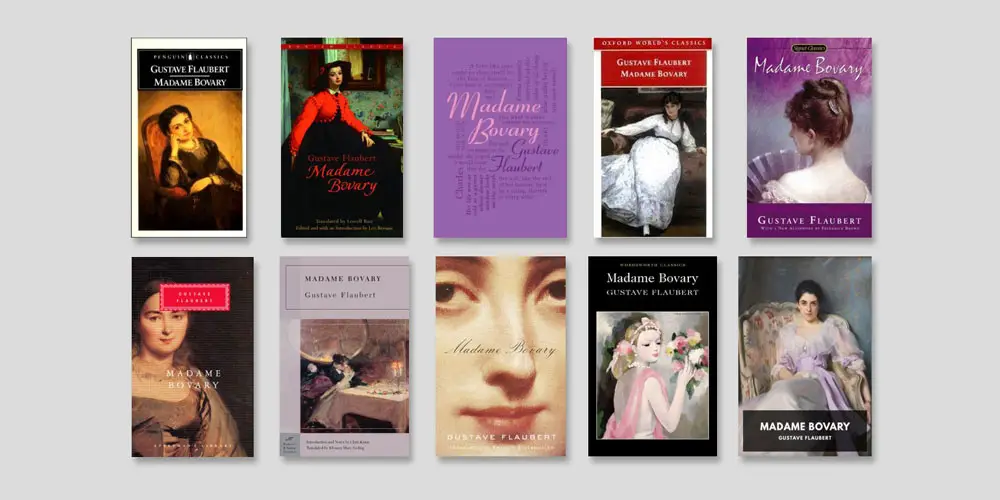“Which English translation of Madame Bovary should I read?”
So, you want to read Flaubert’s literary masterpiece, a pioneering and exemplary work in the tradition of literary realism, whose central character, though said to be based on a real person and/or himself, Flaubert fashioned to resemble that of Don Quixote.
It’s such a foundational work that it’s easy to overlook its innovative characteristics.
Originally serialized in 1856 French with the title Madame Bovary: Mœurs de province, its author was legally accused of spreading obscenity—for the book’s depiction of adultery—and stood trial in January 1857. Flaubert was acquitted, and the book now bears a dedication to Maître Sénard, the lawyer who defended him.
TLDR?
I found so much information on translations of Madame Bovary that I had to split this post into two. If you just want a quick-and-dirty recommendation on which translation to choose, jump to the conclusion of Part 2.
Madame Bovary: Translations in English
The original Marx translation, published thirty years after the French version, is available in original and edited form. Nine others are currently in print too.
Described Below (on this page)
- 1886 – Eleanor Marx-Aveling
- 1902 – W. Blaydes
- 1905 – Henry Blanchamp (abridged)
- 1928 – J. Lewis May
- 1948 – Gerard Hopkins (Oxford)
- 1949 – Joan Charles
- 1950 – Alan Russell (Penguin)
- 1957 – Francis Steegmuller (Everyman/Vintage)
- 1959 – Lowell Bair (Bantam)
- 1964 – Mildred Marmur (Signet)
- 1965 – Marx-Aveling edited by Paul de Man (Norton)
Described in Part 2 (separate page)
- 1992 – Geoffrey Wall (Penguin)
- 2004 – Margaret Mauldon (Oxford)
- 2005 – Marx-Aveling edited by Paul de Man and Margaret Cohen (Norton)
- 2009 – Raymond N. MacKenzie (Hackett)
- 2010 – Christopher Moncrieff (Alma)
- 2010 – Lydia Davis (Penguin)
- 2011 – Adam Thorpe (Vintage/Modern Library)
Madame Bovary: Other Translations
The Marx-Aveling translation was the first to be published, but Marx-Aveling was not the first translator of Madame Bovary into English. There had already been two others.
The London Review of Books: “Writer’s Writer and Writer’s Writer’s Writer” by Julian Barnes
The first to attempt a translation was Juliet Herbert, who worked closely with the author. For lack of a publishing contract, Flaubert dropped the project.
“Flaubert and the retranslation of Madame Bovary” by Sharon Deane
Then in 1878, George Saintsbury published an essay containing translations of excerpts from the novel.
Madame Bovary: Translation Comparison
Extracts have been included below so that you can see how the different translations sound.
Madame Bovary: The Challenges of Translation
The London Review of Books: “Writer’s Writer and Writer’s Writer’s Writer” by Julian Barnes
This detailed article explains some of the challenges, and the change in people’s approach to translation, which in the last century has moved “away from smoothness and towards authenticity…. [A translation] must be written for the contemporary reader, yet give that reader the same, or a similar, ease or difficulty as an original reader would have had. And just as there can be delinquent looseness, so there can be misguided over-accuracy…. To compare several different versions of Madame Bovary is not to observe a process of accumulation, some gradual but inevitable progress towards certainty and authority (except in the occasional discarding of error); rather, it is to gaze at a sequence of approximations.”
Flaubert and the Imperfect Tense
New York Review of Books: “Flaubert, Imperfect” by Jonathan Raban
“Every modern translator has been alert to how well the imparfait conveys the numbing repetitiousness of life in Madame Bovary: it is (among several other shades of meaning and implication) the tense of the daily round and the routine action, the tense of provincial boredom. It also tends to be cumbersome and obtrusive in its English form, working best when used sparingly and in short passages.”
Flaubert and Italics
De Man says, in the note in his 1965 edition: “[Flaubert] italicizes certain words, especially when he is reporting someone’s speech, in order to catch a nuance which is particularly important to him: the use of stilted, inert speech that reveals the degradation of the character’s relation towards language. Sometimes entire expressions are italicized… but at other times it is a single word, quite inconspicuous at first sight, whose cliché-like nature is revealed only by the use of this typographic device…. Except in some more obvious instances, the effect is irrevocably lost in translation.”
Exotic and Irrational Entertainment: “”The best I could do”: Eleanor Marx and translating Madame Bovary”
“In the novel’s opening passage Flaubert italicizes ‘nouveau,’ as he does many phrases in Madame Bovary—generally signalling a habitual or hackneyed expression. But in English italics function differently: they provide emphasis or indicate words kept in the original language. Marx generally chooses to place Flaubert’s italicized phrases in quotes, while Davis provides italics wherever Flaubert does. Paradoxically, Marx’s quotes seem like a closer English equivalent to Flaubert’s intended meaning than do Davis’s more literal italics. (Hopkins and Steegmuller are inconsistent; often, as in the opening passage, they silently ignore Flaubert’s italics altogether.)”
Flaubert and Precision
NPR: “’Bovary’ Translation Does ‘Le Mot Juste’ Justice” by Maureen Corrigan
“Flaubert created Madame Bovary through a process of ruthless pruning…. ‘To be simple,’ wrote Flaubert, ‘is no small matter.’ Repetitions of words, sounds and even letters annoyed him, particularly so in this emotionally radical novel where so much depends on style alone.”
New York Magazine: “Knee-Deep in ‘Bovary’” by Sam Anderson
“Perfect translation, in the common-sense fantasy of one-to-one correspondence, is of course impossible. Even the simplest message, moved from one language to another, inevitably gets warped: It loses its music, its cultural resonance, and the special pace at which it surrenders its information…. Bovary’s contemporaries include Moby-Dick, Bleak House, and Les Misérables. Flaubert’s novel, however, demonstrates the kind of perfect control seen more often in poetry: seamless sentences that unite, seamlessly, into paragraphs, which then flow seamlessly into episodes and chapters—craftsmanship so advanced that the craftsmanship disappears.”
Who was Eleanor Marx-Aveling?
She was the youngest daughter of Karl Marx, a socialist, a writer, and a translator. As translator and editor, she worked with her father and Friedrich Engels on Das Kaptial. She also translated some of Henrik Ibsen’s plays from Norwegian to English.
About the Marx-Aveling translation of Madame Bovary
The Oxford Guide to Literature in English Translation edited by Peter France
“Her plain version, though not attempting to match Flaubert’s style, stands comparison with several of the later versions.”
“Eleanor Marx and Gustave Flaubert” by Faith Evans
“It was the first English translation to appear and remained the only English version for many years, and although several more have been undertaken in the past half-century it remains among the most readable. Yet for reasons that I believe were sometimes unconnected with the translation itself, it has often suffered harshly at the hands of the critics. Vladimir Nabokov, for instance, in his reading of Madame Bovary, rages against translators in general – ‘ignorant, treacherous and philistine’ – and Marx in particular. Lectures on Literature, published after his death, reproduces a page from his teaching notebook in which he lists what he considers to be some of her mistakes.”
Paul de Man, whose edited version was published in 1965, says in his introduction: “[T]he Marx Aveling text has advantages and drawbacks. One of its main virtues is the relatively high degree of fidelity in rendering the cadence of Flaubert’s sentence… [but] Mrs. Aveling often loses track of the meaning in the meditative, inward passages and renders the already obscure original altogether opaque.”
From Marx-Aveling’s introduction to the 1886 and 1892 editions reproduced on the blog Exotic and Irrational Entertainment:
“Certainly no critic can be more painfully aware than I am of the weaknesses, shortcomings, the failures of my work; but at least the translation is faithful. I have neither suppressed a line, nor added a word. That often I have not found the best possible word to express Flaubert’s meaning I know; but those who have studied him will understand how impossible it must be for any one to give an exact reproduction of the inimitable style of the master. . . My work, then, I know is faulty. It is pale and feeble by the side of the original. Yet, if it induces some readers to go to that original, if it helps to make known to those who cannot thus study this work of the greatest of French novelists after Balzac, I am content. . . I do not regret having done this work; it is the best I could do.”
“Flaubert’s Voice: Retranslating Madame Bovary” by Geoffrey Wall
“She turned to the translation of Madame Bovary in the years just after her father’s death. In some sense, translation was an escape from the kind of intellectual work that would have connected her with her father. Curious to think of the daughter of Karl Marx immersing herself so intimately in the bourgeois world. Eleanor Marx, as far as I can tell, was bilingual or trilingual. German was spoken at home. English was not her first language. It must have been her third language, after Polish and French. You can tell because she writes English with a perpetual engaging oddity. She escaped the flowing style. Her translation achieves an austere literalism, which I greatly admire. She respects sentence boundaries and she respects the syntactical order of the original. Unfortunately, she mangles the poetic moments. Her translation falls down at those moments where Flaubert has invested, imaginatively, in his subject-matter.”
Extract from the Marx-Aveling translation of Madame Bovary
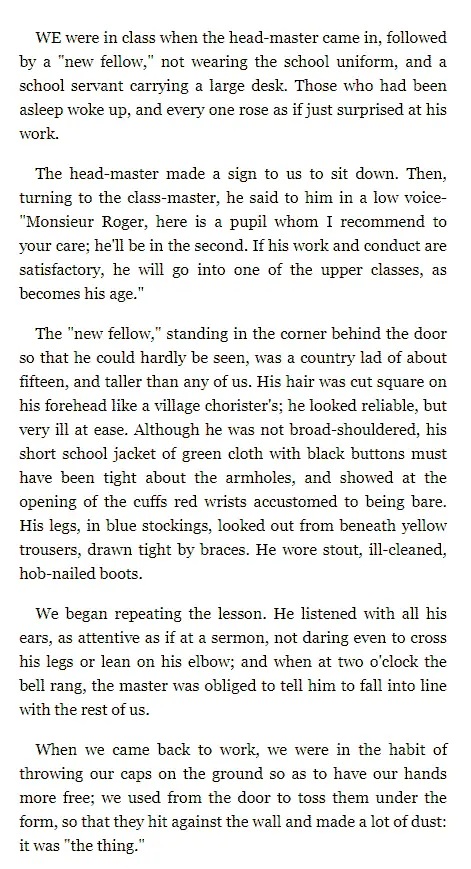
Get the Marx-Aveling translation of Madame Bovary
Since this translation is in the public domain, there are many print versions and also some free ebooks available. See below. There is also an edited version published by Norton.

Get the World Cloud Classics Marx-Aveling translation of Madame Bovary: Provincial Manners
Word Cloud Classics have a flexible plastic/vinyl cover. They're not exactly hardcovers, but they're a step up from paperbacks in terms of esthetics and durability.
Available as a flexibound book (ISBN 9781607107347, 320 pages).

Get the Enriched Classics Marx-Aveling translation of Madame Bovary: Provincial Manners
Includes supplementary material written by Frederic Will: introduction, chronology, timeline, outline of themes and plot points, explanatory notes, critical analysis, discussion questions, list of recommended related books and films.
Available as a paperback (ISBN 9781416523741, 512 pages).
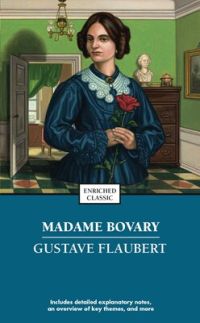
Get the Enriched Classics Marx-Aveling translation of Madame Bovary: Provincial Manners
Includes supplementary material written by Frederic Will: introduction, chronology, timeline, outline of themes and plot points, explanatory notes, critical analysis, discussion questions, list of recommended related books and films.
Available as an ebook (ISBN 9781416548164, 512 pages).
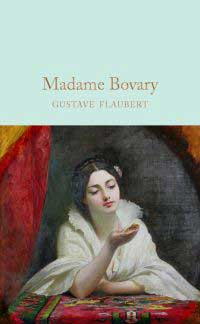
Get the Macmillan Collector's Library Marx-Aveling translation of Madame Bovary: Provincial Manners
Includes an introduction by Peter Harness. The books in the Macmillan Collector's Library series are SMALL hardcovers with gilt edges, a ribbon marker, and real cloth binding. As long as you're okay with a small font size, they are suitable for collectors or as gifts.
Available as a hardcover (ISBN 9781509842889, 432 pages).
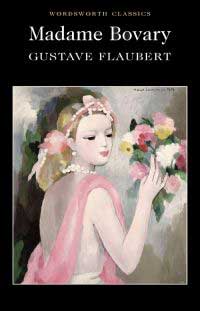
Get the Wordsworth Classics Marx-Aveling translation of Madame Bovary: Provincial Manners
Includes an introduction by Roger Clark.
Available as a paperback (ISBN 9781853260780, 320 pages).
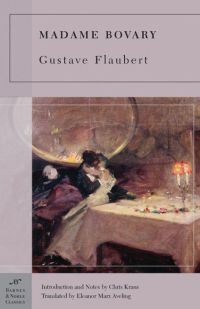
Get the Barnes & Noble Classics Marx-Aveling translation of Madame Bovary: Provincial Manners
Includes an introduction by Chris Kraus. Books in the Barnes & Noble Classics series include features such as: an introduction, author bio, chronology, notes, info on works inspired by the work, comments by other authors, study questions, list of books for further reading, index, glossary.
Available as a paperback (ISBN 9781593080525, 368 pages).
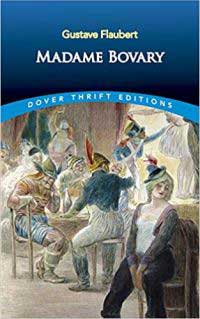
Get the Dover Thrift Editions Marx-Aveling translation of Madame Bovary: Provincial Manners
Reprint of the edition by Vizetelly and Company, London, 1886.
Available as a paperback (ISBN 9780486292571, 256 pages).
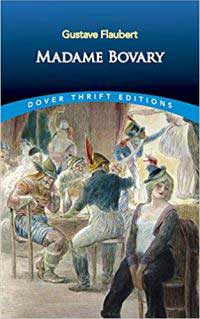
Get the Dover Thrift Editions Marx-Aveling translation of Madame Bovary: Provincial Manners
Reissue of the edition by Vizetelly and Company, London, 1886.
Available as an ebook (ISBN 9780486115160).
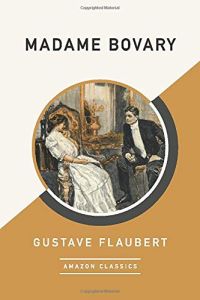
Get the AmazonClassics Marx-Aveling translation of Madame Bovary: Provincial Manners
Possibly free. Definitely free if you subscribe to Kindle Unlimited.
Available as an ebook.
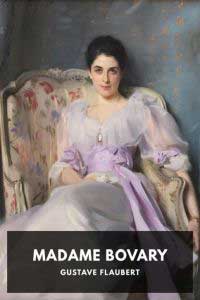
Get the Standard Ebooks Marx-Aveling translation of Madame Bovary: Provincial Manners
Free! Available in epub, Kindle, Kobo, and Advanced epub formats. Standard Ebooks are professionally edited, professionally designed versions of the Project Gutenberg texts.
Available as an ebook (ISBN 9780192840394).
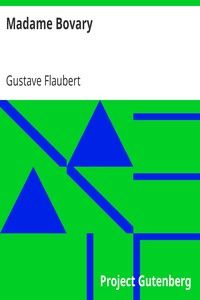
Get the Project Gutenberg Marx-Aveling translation of Madame Bovary: Provincial Manners
Free! Available in html, epub, Kindle, and plain text formats.
Available as an ebook.
About the Blaydes translation of Madame Bovary
The Blaydes translation was published by P.F. Collier & Son in New York with a 39-page introduction by Henry James and a 3-page biography of Flaubert by Edmund Gosse. It was illustrated with color facsimiles of paintings by George Jeanniot.
I assume the translation is complete.
Extract from the Blaydes translation of Madame Bovary
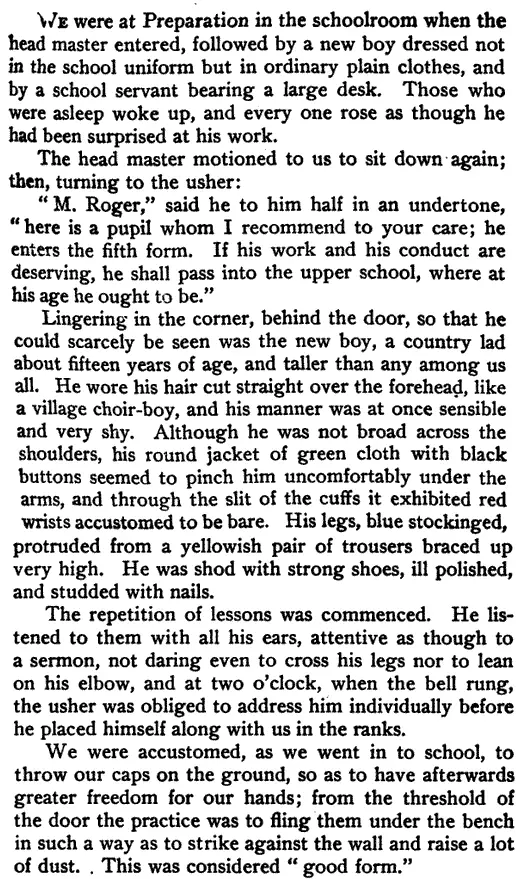
Get the Blaydes translation of Madame Bovary
You can find scans online at Hathi Trust:
See the copies of the Blaydes translation available from antiquarian booksellers:
Who was Henry Blanchamp?
Worldcat lists him as the translator of works originally in French or German, by authors including Honoré de Balzac and Guy de Maupassant.
About the Blanchamp translation of Madame Bovary
It’s an obscure, abridged translation published in the Lotus Library series of Greening & Co. in 1905.
“Flaubert and the retranslation of Madame Bovary” by Sharon Deane
“[T]his edition may wish to strike a balance between readability, titillation and decorum. As to its persistence, the Blanchamp translation is only reissued twice (1910; 1929) and hereafter falls into obscurity.”
Who was James Lewis May?
He was an English author, translator, and publisher. He wrote studies of writers such as George Eliot and Charles Lamb and on Catholic subjects.
About the May translation of Madame Bovary
The Oxford Guide to Literature in English Translation edited by Peter France
The May and Hopkins translations “aim for an English style worthy of the original; in doing so, they reshape Flaubert’s sentences, lightening them and making them flow more easily.”
“Flaubert and the retranslation of Madame Bovary” by Sharon Deane
It was “presented in a luxurious, illustrated edition. Although ungenerously described by one reviewer as ‘one of those unfriendly monumental tomes which make a meretricious bid for popularity at Christmas time’, the same nevertheless welcomes the translator’s efforts, claiming that ‘Mr. May has given us Madame Bovary in a more becoming English dress than any of those who have hitherto attempted the insurmountable task’ “. May’s introduction casts doubt on the legitimacy of previous translations, implying that his will serve the author better. Nevertheless, “this particular translation still pales in quantitative comparison against the deluge of reprints of the Marx-Aveling version [albeit in part for financial reasons].”
Get the May translation of Madame Bovary
See the copies of the May translation available from antiquarian booksellers:
Who was Gerard Hopkins?
Gerard Manley Hopkins was an English poet and Jesuit priest.
About the Hopkins translation of Madame Bovary
The Oxford Guide to Literature in English Translation edited by Peter France
The May and Hopkins translations “aim for an English style worthy of the original; in doing so, they reshape Flaubert’s sentences lightening them and making them flow more easily…. Hopkins in particular writes with freedom and flourish, producing a readable, very English-sounding text.”
“Flaubert and the retranslation of Madame Bovary” by Sharon Deane
“[T]he Hopkins translation is taken up by Oxford University Press in 1959: it is at this point that we can note the very beginnings an evident competition between the houses of Penguin and OUP as far as the publication of Madame Bovary is concerned…. In 1981, OUP take the decision to reissue a revised version of Hopkins’s translation, replacing his foreword with an extensive introduction by the Oxford academic Terence Cave, and including a wealth of explanatory notes. Inherent in this move is a conscious attempt to appeal to a specifically academic market, along with evidence that the publishers hold with the ‘new equals improved’ ethos.”
“Flaubert’s Voice: Retranslating Madame Bovary” by Geoffrey Wall
“I felt that Gerard Hopkins (1949) made Flaubert flow too swift and smooth by altering sentence boundaries, by changing psychological verbs such as “songer”. Hopkins’ translation is a pleasantly readable approximation to Flaubert. I respected that, and yet I wanted something more demanding, more textured.”
Extract from the Hopkins translation of Madame Bovary
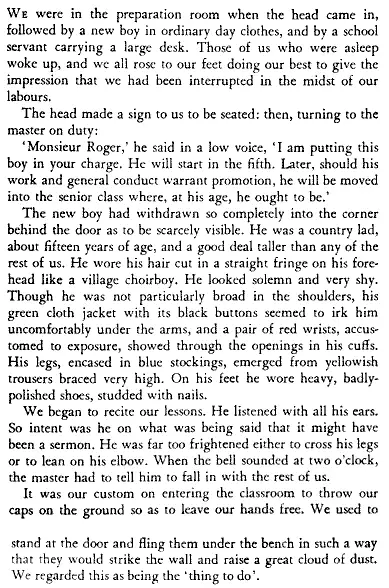
Get the Hopkins translation of Madame Bovary
The Hopkins translation is still under copyright but out-of-print. You may be able to find a second-hand copy. See below.
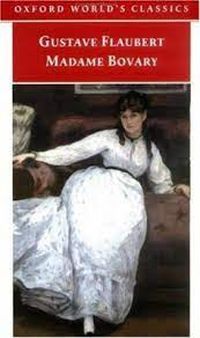
Get the Oxford World's Classics Hopkins translation of Madame Bovary: Life in a Country Town
Includes an introduction by Terence Cave and Notes by Mark Overstall. This edition is out of print, but you may be able to find a second-hand copy.
Available as a paperback (ISBN 9780192833990, 362 pages).
Who is Joan Charles?
According to Worldcat, she also translated Stendahl’s The Red and the Black and wrote novels.
About the Charles translation of Madame Bovary
The translation was issued by International Collectors Library with illustrations by Ben Stahl. I believe those copies contain a complete translation.
The Paris Review: “The Sins of a Translator” by Lydia Davis
This edition “follows the original very closely—she wouldn’t dream of adding or omitting material with the writerly flair of, for instance, Francis Steegmuller (American, 1957) or Gerard Hopkins (English 1948) [but] I came to see her as tight-laced and humorless.”
However! I believe the copies published by John C. Winston Co (or, presumably, Holt Rinehart & Winston) are abridged. They have the illustrations by Ben Stahl but they say “edited by William Somerset Maugham” and possibly render the title as “Gustave Flaubert’s Madame Bovary”. They belong to the series Maugham created called “Ten greatest novels of the world.”
My Maugham Collection: “W. Somerset Maugham and His 10 Best Novels of All Time”
“Maugham was approached by the publisher John C. Winston to reissue the 10 novels on his list, inviting him to write a preface for each and abridge the volumes.”
Extract from the Charles translation of Madame Bovary
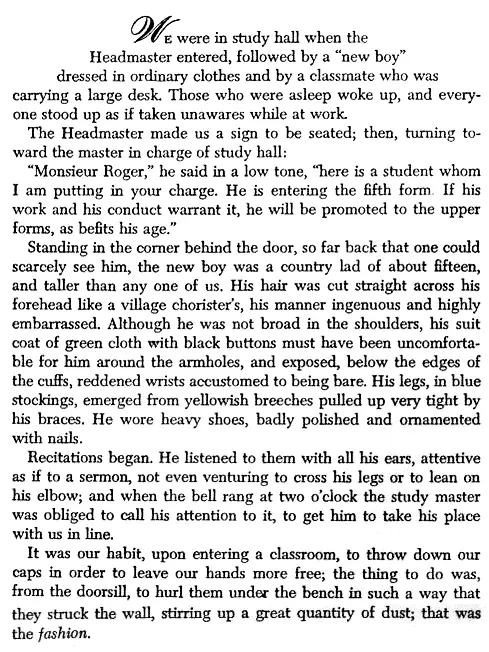
Get the Charles translation of Madame Bovary
See the copies of the Charles translation available from antiquarian booksellers:
About the Russell translation of Madame Bovary
The Oxford Guide to Literature in English Translation edited by Peter France
It is a “fluent” translation in the tradition of a tendency to “domesticate”.
The Atlantic: “No Way, Madame Bovary” by Clive James
The article says that Mauldon’s only improvement to Russell’s work is to change his use of the N-word to “black man”. “I can’t find even one other word in Russell’s translation that sounds dated in the wrong way. All the rest of it sounds dated in the right way—that is, closer to Flaubert in time. It must also be said… that most of it is closer to Flaubert in possessing a sense of style.”
Extract from the Russell translation of Madame Bovary
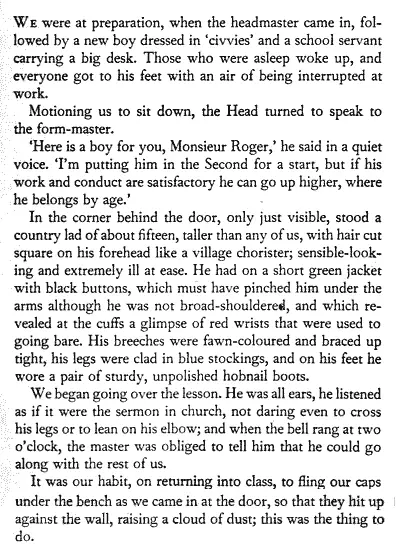
Get the Russell translation of Madame Bovary
The Russell translation is still under copyright but out-of-print. You may be able to find a second-hand copy. See below.
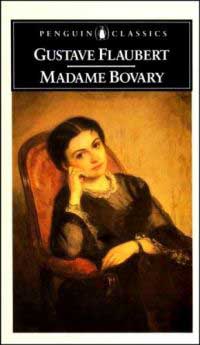
Get the Penguin Classics Russell translation of Madame Bovary: A Story of Provincial Life
Includes an introduction by Alan Russell. This edition is out of print, but you may be able to find a second-hand copy.
Available as a paperback (ISBN 9780140440157, 368 pages).
Who was Francis Steegmuller?
Francis Steegmuller was a prolific American writer and translator. His stories appeared in The New Yorker and elsewhere; he published a number of novels; he published biographies and other non-fiction; he translated and published a volume of selected letters of Flaubert’s and a “double portrait” entitled Flaubert and Madame Bovary.
About the Steegmuller translation of Madame Bovary
The Oxford Guide to Literature in English Translation edited by Peter France
“He is not always precise in his rendering of Flaubert’s meaning, he tends to interpret, and he treats the syntax quite freely. Nevertheless, his translation, as well as being highly readable, generally comes closer than the others to rendering the sense of Flaubert’s narrative and dialogue, his irony, and his poetry.
The London Review of Books: “Writer’s Writer and Writer’s Writer’s Writer” by Julian Barnes
After a long discussion of the ins and outs of translation, and of the recent Davis translation, Barnes says: “If you want a freer translation, Steegmuller is best.”
Extract from the Steegmuller translation of Madame Bovary
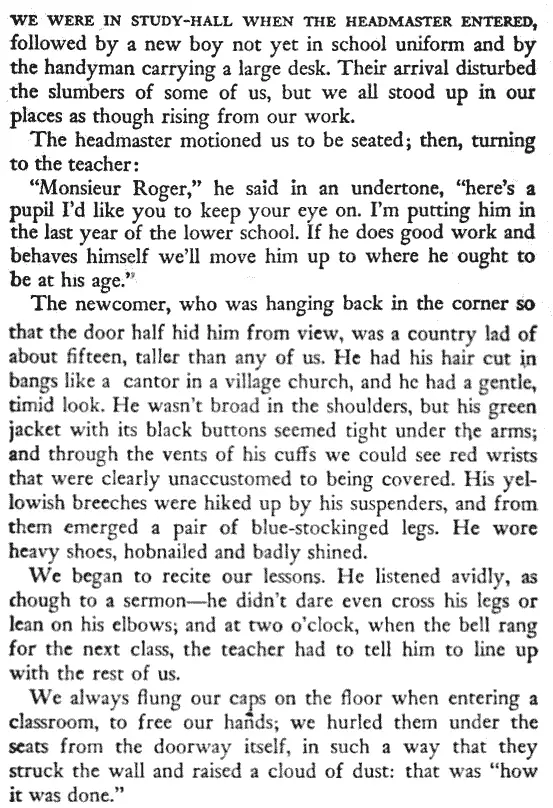
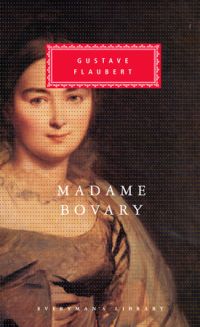
Get the Everyman's Library Steegmuller translation of Madame Bovary: Patterns of Provincial Life
Includes an introduction by Victor Brombert.
Available as a hardcover (ISBN 9780679420316, 368 pages).
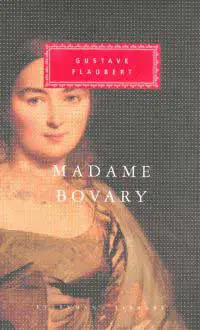
Get the Everyman's Library Steegmuller translation of Madame Bovary: Patterns of Provincial Life
Includes an introduction by Victor Brombert.
Available as a hardcover (ISBN 9781857151404, 376 pages).

Get the Vintage Classics Steegmuller translation of Madame Bovary: Patterns of Provincial Life
Just the text of the Steegmuller translation.
Available as a paperback (ISBN 9780679736363, 432 pages).

Get the Vintage Classics Steegmuller translation of Madame Bovary: Patterns of Provincial Life
Just the text of the Steegmuller translation.
Available as an ebook (ISBN 9780804151337, 432 pages).
Who is Lowell Bair?
He translated numerous works from French, including: The Red and the Black by Stendhal; Candide by Voltaire; Dangerous Liaisons by Choderlos de Laclos; Cyrano de Bergerac by Edmond Rostand; The Three Musketeers and The Count of Monte Cristo by Alexandre Dumas; The Hunchback of Notre Dame and Ninety-Three by Victor Hugo; From the Earth to the Moon by Jules Verne; The Phantom of the Opera by Gaston Leroux; Nana by Emile Zola; Eugenie Grandet by Honoré de Balzac.
Extract from the Bair translation of Madame Bovary
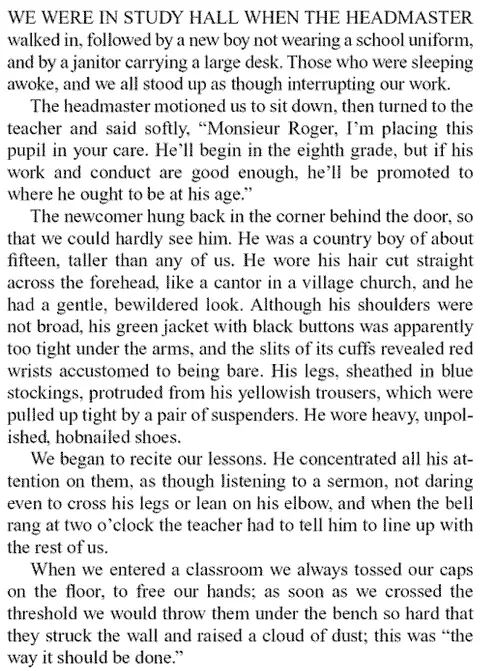
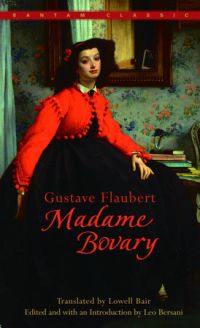
Get the Bantam Classics Bair translation of Madame Bovary
Edited and with an introduction by Leo Bersani. Contains an author bio, nine essays, and a bibliography.
Available as a paperback (ISBN 9780553213416, 512 pages).
Extract from the Marmur translation of Madame Bovary
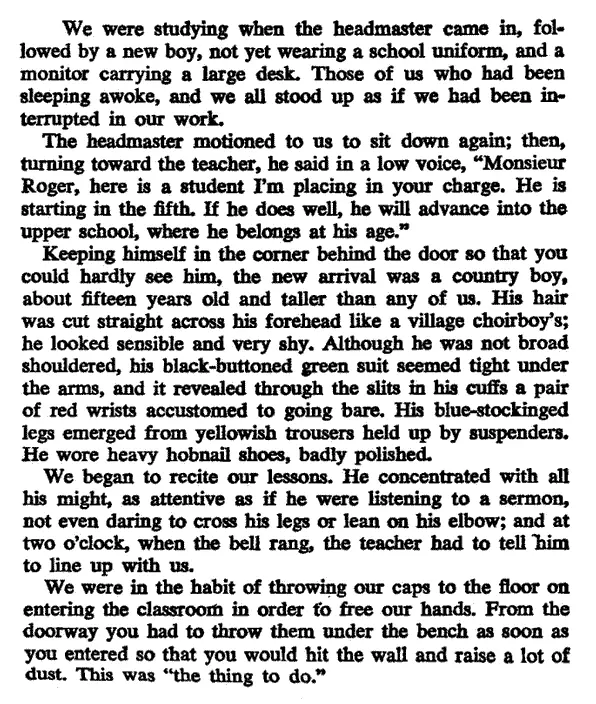

Get the Signet Classics Marmur translation of Madame Bovary
Includes an introduction by Robin Morgan and an afterword by Frederick Brown. Includes Evelyn Gendel's translation of The Trial of "Madame Bovary" (79 pages, comprising the opening speech for the prosecution, the speech for the defense, and the verdict.)
Available as a paperback (ISBN 9780451418500, 464 pages).

Get the Signet Classics Marmur translation of Madame Bovary
Includes an introduction by Robin Morgan and an afterword by Frederick Brown. Includes Evelyn Gendel's translation of The Trial of "Madame Bovary" (79 pages, comprising the opening speech for the prosecution, the speech for the defense, and the verdict.)
Available as an ebook (ISBN 9781101143773, 411 pages).
Who was Paul de Man?
Paul de Man (Paul Adolph Michel Deman) was a Belgian-born American literary critic.
About the de Man translation of Madame Bovary
This is a revised version of the original 1886 English translation.
From the introduction: “The Victorian diction has, in part, been modernized. Flaubert’s original paragraphs, a fundamental and subtly measured unit of composition, have been restored throughout. Several misleading inaccuracies and mistranslations have been corrected.”
The Paris Review: “Some notes on Translation and on Madame Bovary” by Lydia Davis
This edition “exists for a couple of wrong reasons, and people buy it for another wrong reason. Wrong reason number one: Norton chose to use the Marx Aveling translation because it was in the public domain and wouldn’t cost anything (I’m assuming this, or I was told—I can’t remember which). Wrong reason number two (I’m certainly guessing here): They asked Paul de Man to revise and edit it not because he was conscientious and an excellent writer in English but because he had prestige, a reputation, and scholarly intelligence. He then apparently handed most or all of the work over to his wife, and did not acknowledge her. (This I was told by a reliable source.) Wrong reason number three: People buy the book not because it is an excellent translation of this important novel, but because the volume includes informative essays and other useful critical apparatuses.”
The Globe and Mail: Review by Jane Smiley of the Davis translation
The de Man translation “reads like an academic exercise.”
Extract from the de Man translation of Madame Bovary
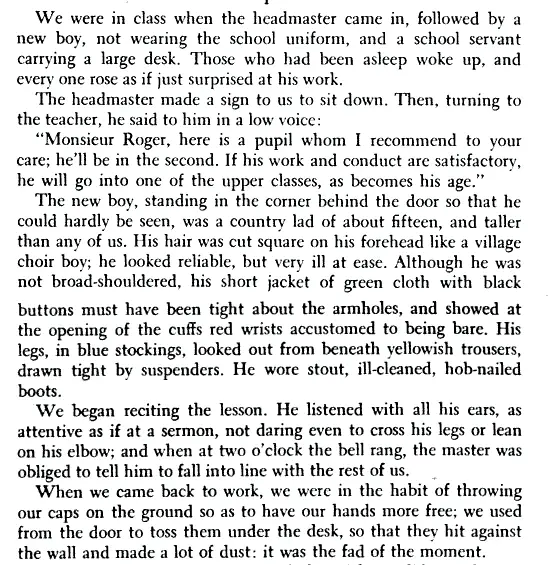
Get the de Man translation of Madame Bovary
This edition is out of print. There is a revised Norton edition edited by Margaret Cohen.
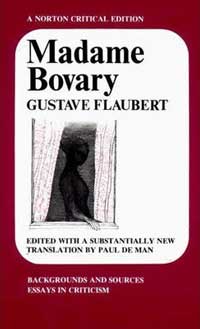
Get the Norton Critical Editions Marx-Aveling/de Man translation of Madame Bovary
This is the First Norton Critical Edition, with text revised by Paul de Man. It includes a note on the translation, backgrounds and souces, 12 critical essays, and a bibliography. This edition is out of print. You may be able to find a second-hand copy.
Available as a paperback (ISBN 9780393096088, 484 pages).
What’s in Part 2?
- translations by Wall, Mauldon, MacKenzie, Moncrieff, Davis, and Thorpe, plus the latest revised edition of Marx-Aveling
- other information and resources (including a book by Steegmuller on the author and his controversial novel)
If you just want a quick-and-dirty recommendation on which translation to choose, jump to the conclusion of Part 2.

